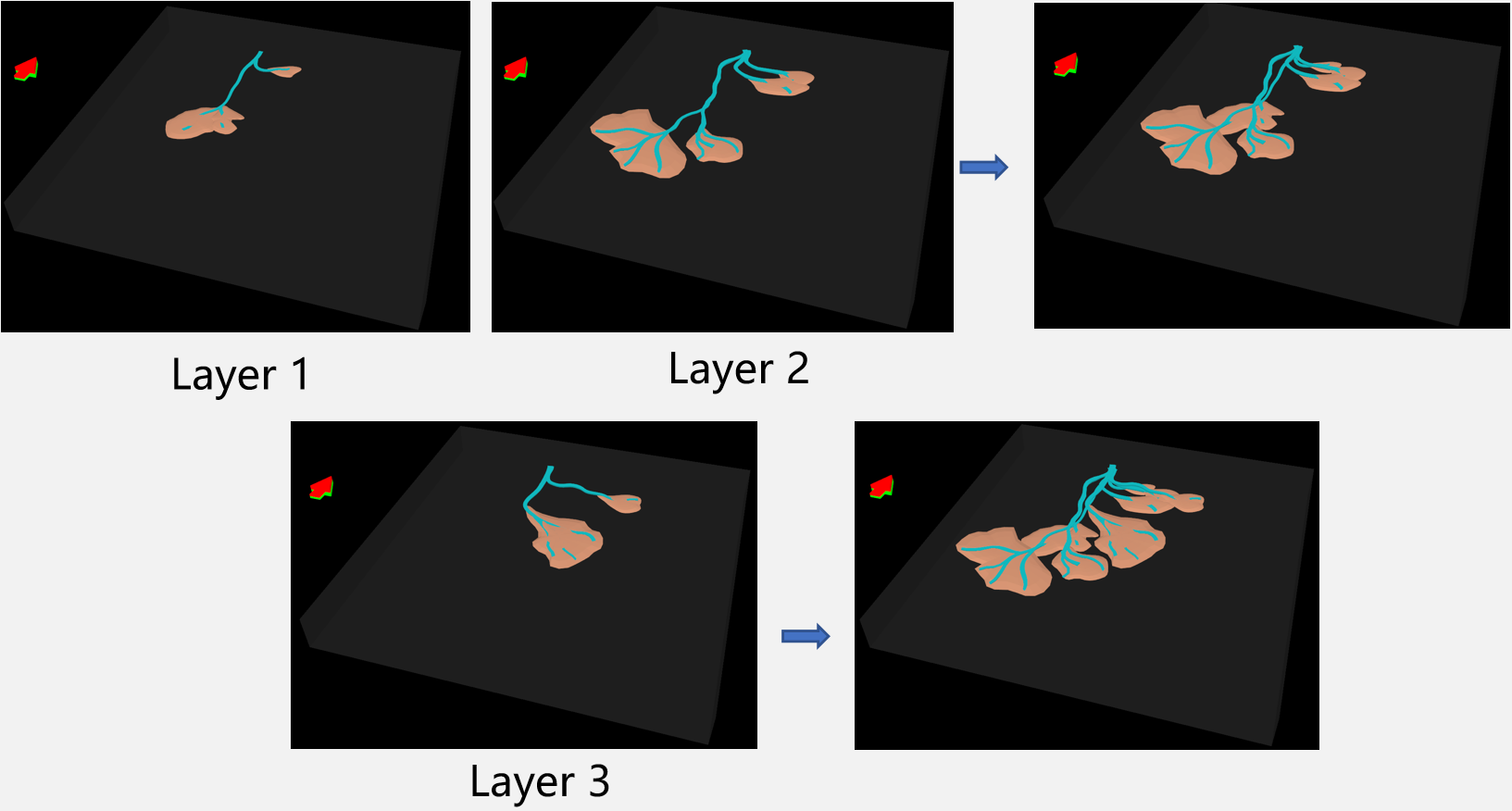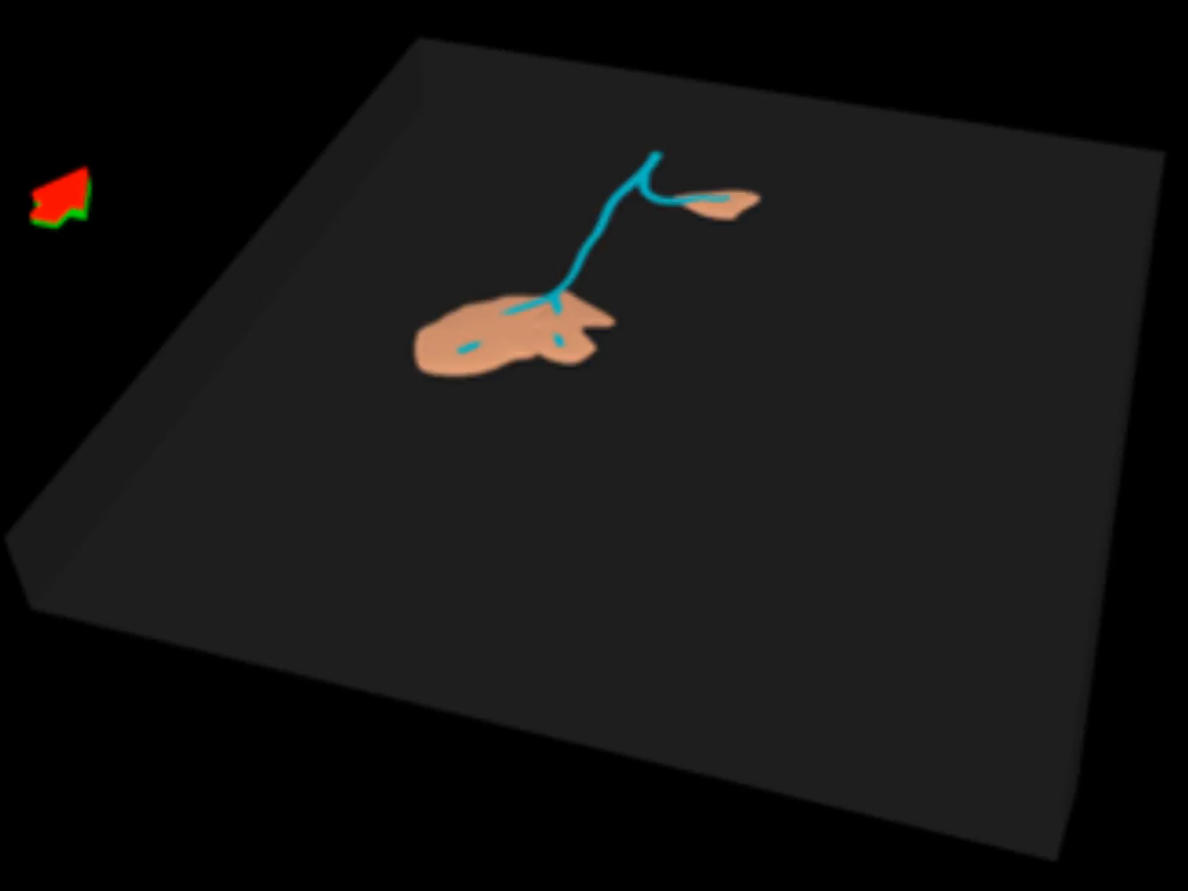The lacustrine Omo Delta in Kenya shows how river-mouth deposit style varies as lake-level changes from 2002 to 2018 based on Google Earth imagery. The deposition pattern at the river mouth transitioned initially from river mouth fans to lobes featuring middle-ground mouth bars, and eventually evolved into elongated channels.
Following 2001, the three primary distributary channels on the Omo Delta exhibited a consistent three-stage development of unique river-mouth deposits.
Using the custom modeling approach, DMatlas systematically established the sediments model of the delta fronts for these two stages.
From 2002 to 2004, during lake-level fall, fan-shaped deposits developed, which began with weakly-defined, shallow, radiating channels.
Subsequently, after the redirection of water flow, a prominent central channel, larger and more distinct, cut across the fan to feed the next river-mouth deposit.


From 2005 to 2007 delta lobes developed, characterized by middle-ground mouth bars and channel bifurcation.

Channel elongation as the lake-level rose overall.
Through DMatlas' custom modeling method, the sedimentation and erosion processes of deltas can be effectively simulated, accurately capturing the evolution of river-mouth bar sand bodies. Currently, DMatlas is actively building a model repository for various sedimentary environments and major oil and gas fields. The aim is to achieve more efficient and precise 3D geological modeling through model sharing and deep learning techniques.
